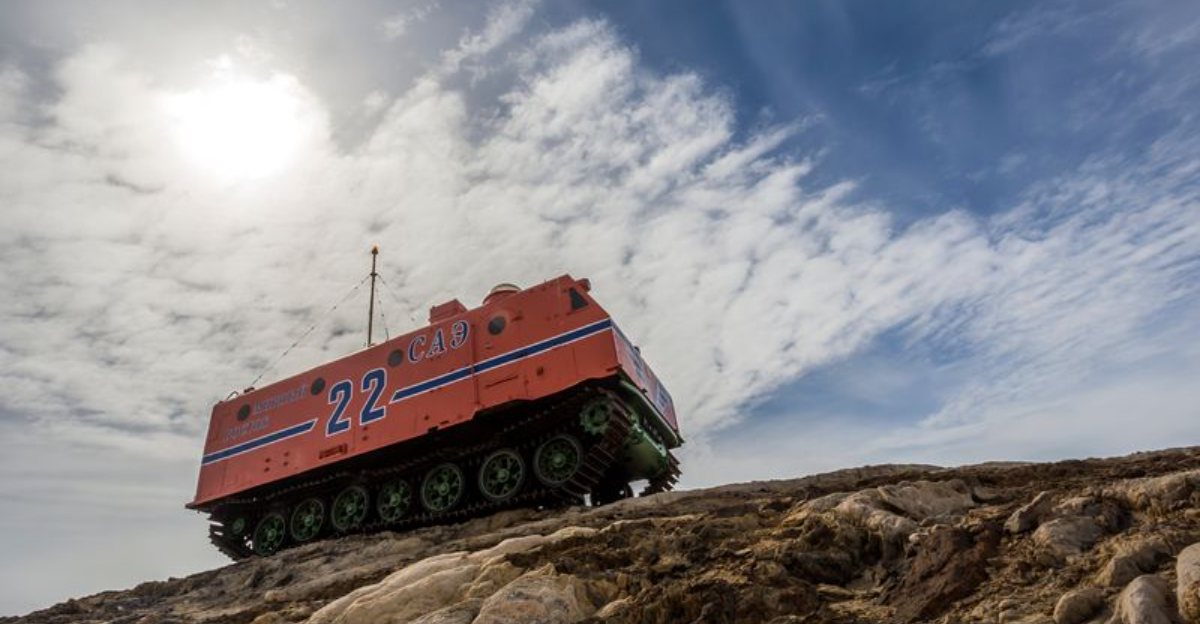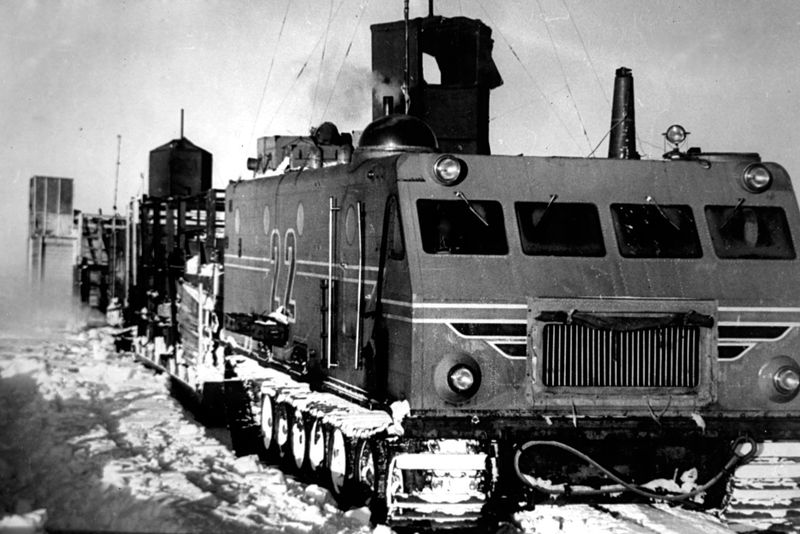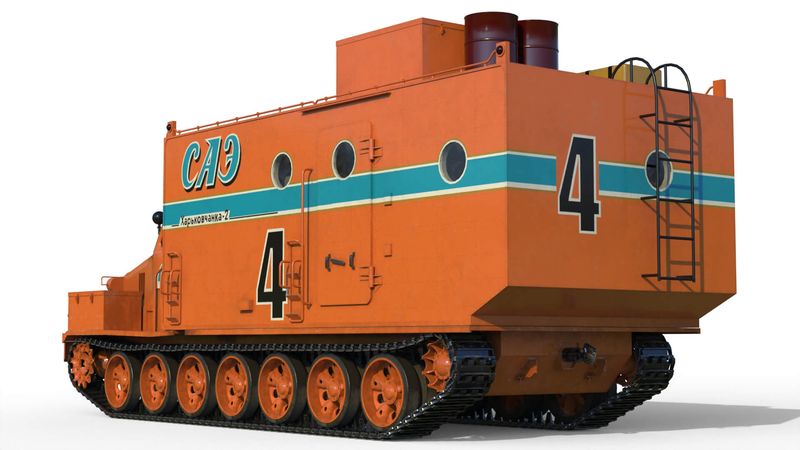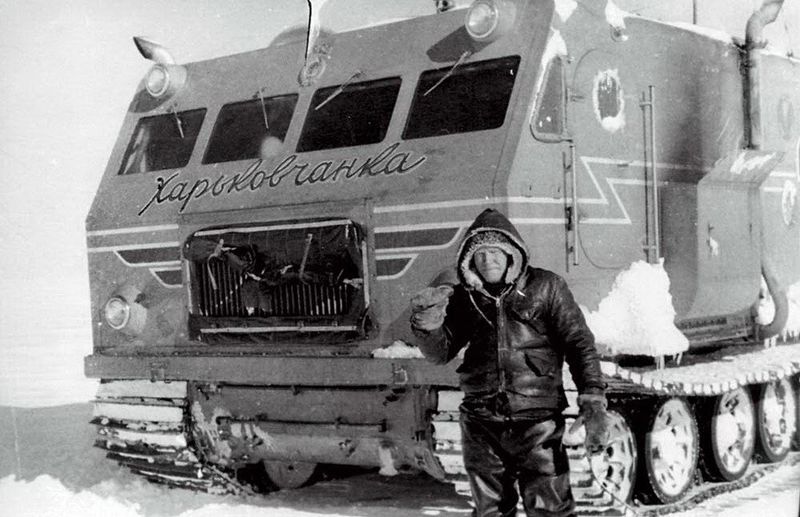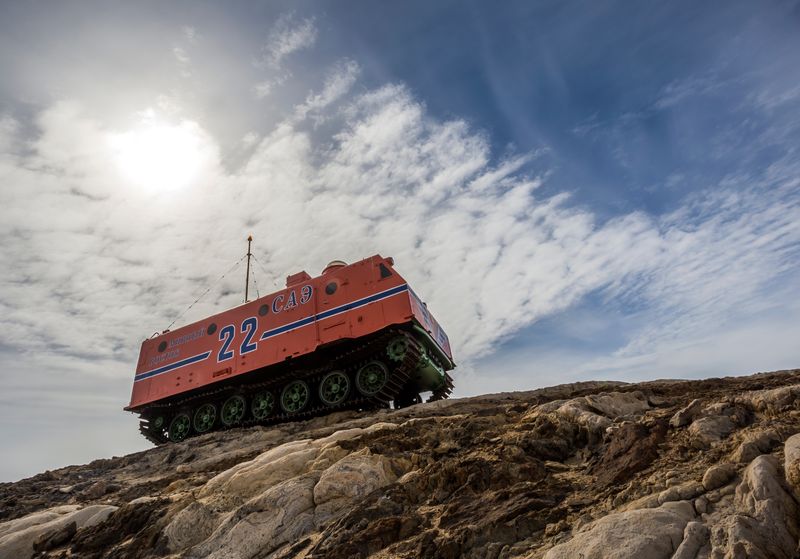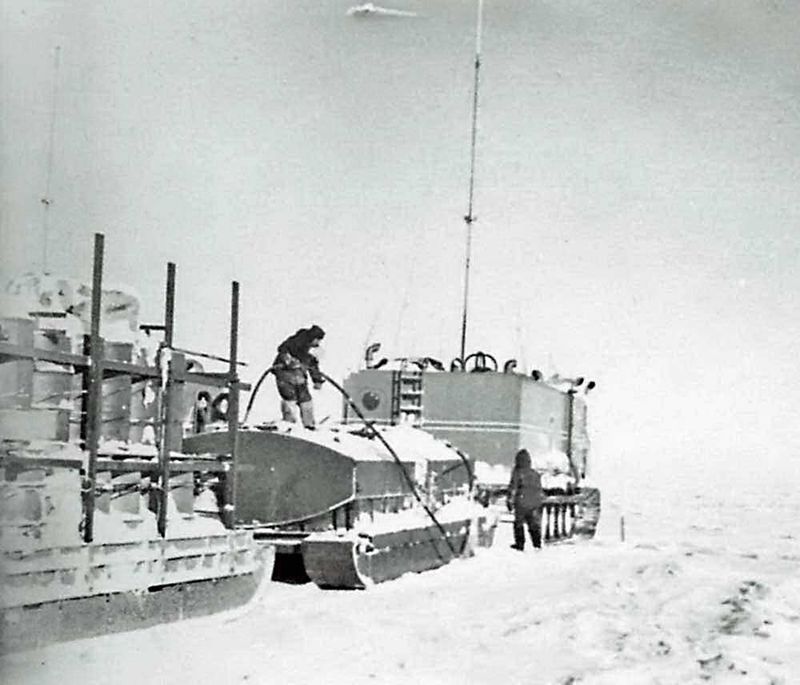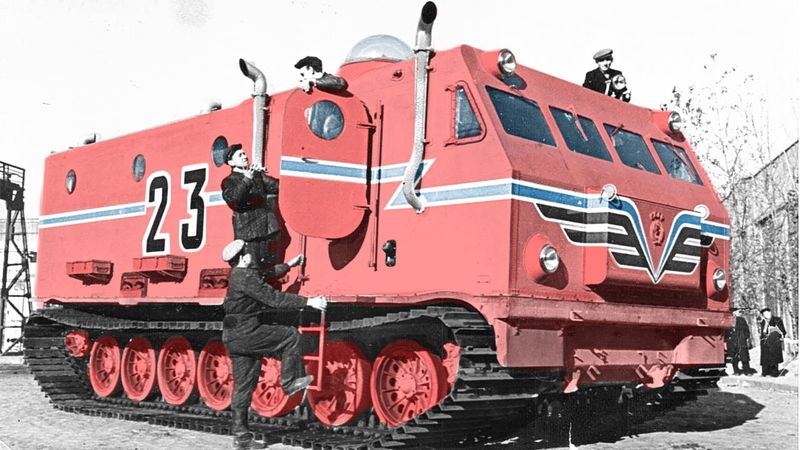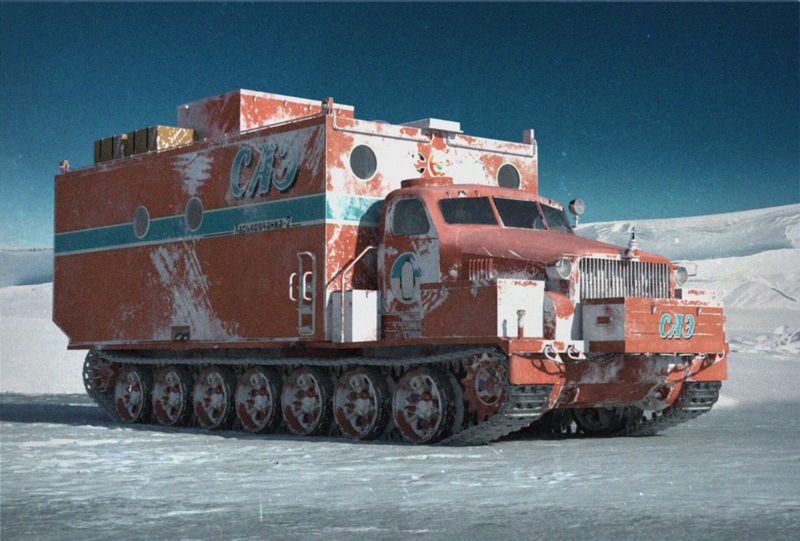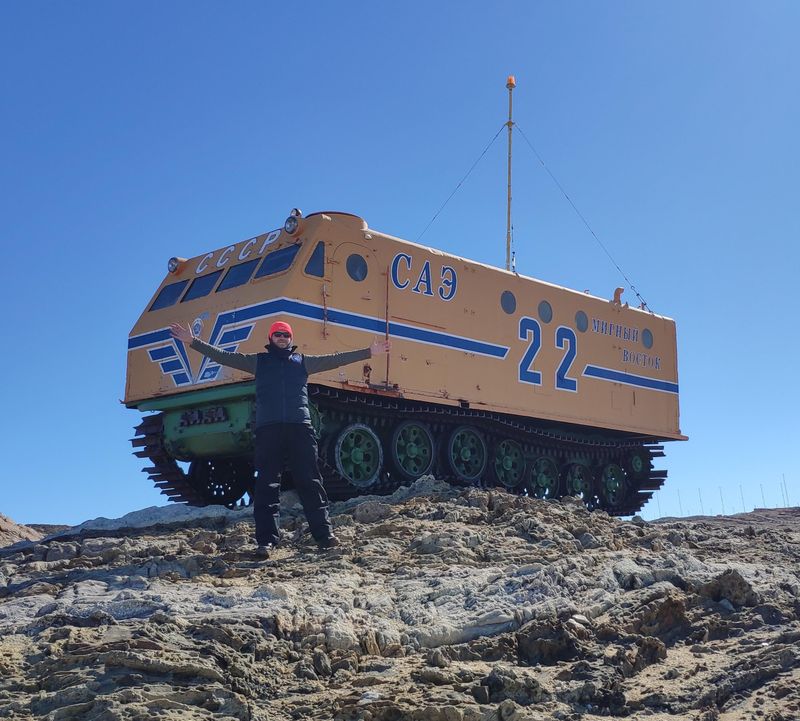The Kharkovchanka vehicles, engineered during the late 1950s, were marvels of Soviet ingenuity designed to thrive in the extreme environment of Antarctica.
These robust machines were more than mere transport; they were mobile homes capable of enduring temperatures as low as -60°C (-76°F).
Here are eight fascinating facts about these colossal vehicles that symbolize the spirit of exploration and innovation.
1. Built for the Harshest Climate
The Kharkovchanka was engineered for survival in the extreme cold, operating smoothly in temperatures dropping to -60°C. Developed in the late 1950s, these vehicles were equipped with advanced insulation to protect the crew from the biting cold.
The engineers paid meticulous attention to every detail, ensuring that the Kharkovchanka could withstand powerful Antarctic winds and blizzards. The vehicle’s robust design allowed it to traverse snow and ice without faltering.
Each journey was a testament to human ingenuity and resilience, as the Kharkovchanka plowed through the harshest climate on Earth.
2. Based on a Tank Chassis
Kharkovchanka’s foundation was the AT-T artillery tractor, itself a descendant of the T-54 tank chassis. This lineage gave the vehicle unmatched durability and capacity to conquer icy landscapes.
The tank-based design provided an incredible advantage, allowing the Kharkovchanka to push through challenging terrains while carrying heavy loads. Engineers leveraged the tank’s robust features to ensure stability and power.
Despite being a behemoth, the vehicle’s design facilitated maneuverability across unpredictable Antarctic ice. This unique combination of tank strength and Arctic adaptability was key to its success in expeditions.
3. Mobile Living Quarters
The Kharkovchanka was a mobile haven on tracks, equipped to house its crew comfortably amid Antarctica’s desolation. Inside, explorers found beds, a kitchen, and even a sauna, turning their vehicle into a cozy refuge.
The design was centered on comfort and practicality, ensuring long-term survival during expeditions. Amenities like a lounge area provided relaxation after arduous days. This living space was ingeniously integrated, allowing scientists and crew members to focus on their mission without distractions.
Kharkovchanka’s interior was a remarkable blend of functionality and comfort, vital for prolonged stays in isolation.
4. Enormous Size
Measuring about 30 feet long and weighing over 27 tons, the Kharkovchanka was a true giant of the ice. Its massive frame could accommodate additional trailers, essential for carrying fuel and supplies vital for long expeditions.
This imposing size was not just for show; it was crucial for stability and storage. The vehicle’s design was a feat of engineering, balancing volume with functionality. Despite its weight, the Kharkovchanka moved with purpose, embodying power and endurance.
The vehicle’s grandeur was a bold statement of Soviet engineering, capable of conquering the vast icy wilderness.
5. Limited Speed, Massive Power
With a top speed of only 18 mph, the Kharkovchanka wasn’t built for speed but for might. Its massive diesel engine enabled it to power through deep snow and icy terrain.
The emphasis was on strength and endurance rather than velocity, allowing it to traverse where others might falter. This limited speed was a trade-off for the sheer force it could exert, essential for hauling heavy loads across challenging terrains.
Its journey was a steady march against nature’s obstacles, combining brute force with resilience. The Kharkovchanka’s power was unmatched, a true workhorse of the Antarctic.
6. Operated on Tracks
Like its tank predecessors, the Kharkovchanka operated on wide tracks, offering unparalleled stability and traction. This design prevented the vehicle from sinking into soft snow, a common challenge in Antarctica.
The tracks distributed the weight evenly, allowing navigation across snow-covered landscapes with ease. Engineers chose this design for its proven efficacy in adverse conditions.
It was this thoughtful engineering that ensured the Kharkovchanka’s success in the harshest environments. The wide tracks were a crucial feature, enabling expeditions to proceed without the fear of getting bogged down in icy traps.
7. Used for Antarctic Expeditions
The Kharkovchanka was pivotal for Soviet Antarctic expeditions, mainly transporting personnel and supplies. Operating between remote research stations, including the legendary Vostok Station, it played a crucial role in scientific endeavors.
These vehicles enabled the establishment of bases in the most isolated places on the planet. Their reliability and capacity were unmatched, making them indispensable for the success of missions.
The Kharkovchanka was more than just transport; it was a lifeline. Its presence ensured the continuity of research and exploration, spotlighting Soviet contributions to polar science.
8. Cultural Icons
Beyond their practical use, Kharkovchankas became symbols of Soviet exploration prowess. Featured in documentaries, books, and science magazines, they captured the imagination of a generation.
Their image was synonymous with Soviet strength and determination. These vehicles were celebrated as icons of technological advancement and exploration spirit. Their contribution to Antarctic missions was immortalized in media, serving as inspiration for future explorers.
The Kharkovchanka’s legacy endures as a testament to human curiosity and ambition. They were more than machines; they were emblems of a nation’s quest for knowledge in uncharted territories.
